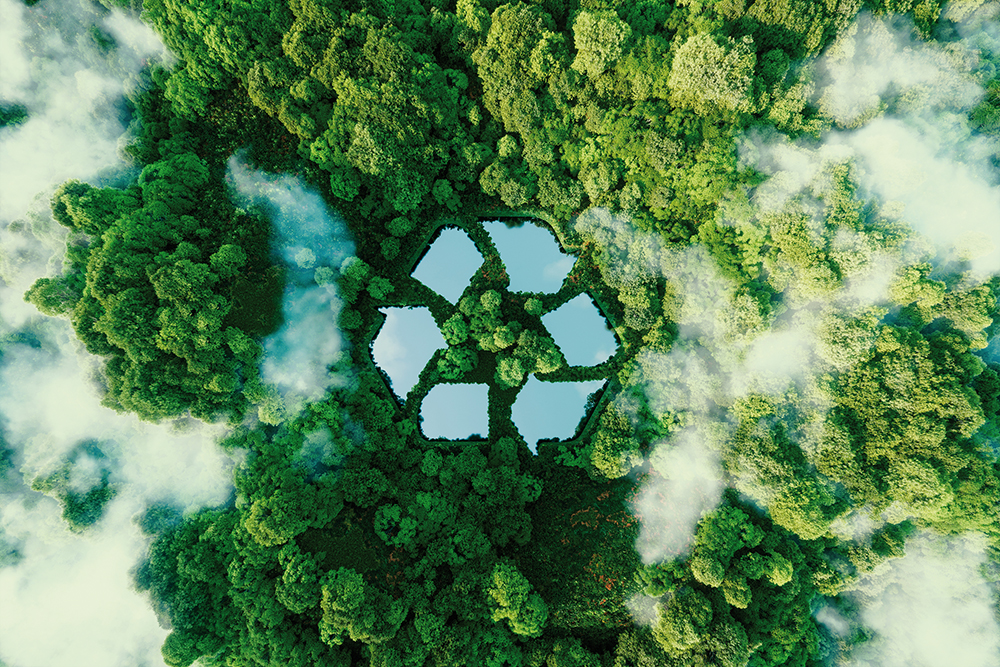To Issue 153
Citation: Schroeder J, Cartwright A, Bat-Erdene G, “Sustainability Unleashed: Driving Positive Impact in the Pharma Industry”. ONdrugDelivery, Issue 153 (Oct/Nov 2023), pp 11–14.
Justin Schroeder, Ann Cartwright and Gigi Bat-Erdene discuss the unique challenges facing the pharmaceutical industry in adopting environmental, social and governance principles, and present a way forward to achieve the necessary goal of improving sustainability within the industry.
INTRODUCTION
As worldwide regulatory bodies and governments start placing stricter environmental regulations and guidelines on the pharmaceutical industry, nearly every major pharmaceutical manufacturer has pledged to work toward net zero. For example, in 2006, the Pharmaceutical Supply Chain Initiative created five principles “to articulate what the industry expects from the supply chain”, including ethics, labour, health and safety, environment and management systems.
“ESG-related challenges will not be overcome overnight. In fact, it’s a continuous journey with no end point.”
The industry has generated tremendous momentum towards sustainability since environmental, social and governance (ESG) principles have become a main focus, but there is still more progress to be made. The environmental component specifically has proven challenging for the pharma industry. As of 2019, for example, the carbon footprint of the pharmaceutical industry was 55% higher than that of the automotive industry.1 Organisations are beginning to understand that an ESG plan must extend beyond their own internal processes and take the efforts and impact of the greater supply chain into consideration, including their partners and contractors.
ESG-related challenges will not be overcome overnight. In fact, it’s a continuous journey with no end point. ESG principles must become part of the fabric of an organisation to achieve long term and meaningful results, from hiring to sourcing raw materials to packaging to transport. This may sound daunting, but this article will provide expert insights into developing and building a successful ESG programme that makes a difference.
UNDERSTANDING THE LANDSCAPE
The pharmaceutical industry approaches ESG considerations from a distinct standpoint. The landscape is heavily regulated and has encountered numerous challenges in recent years, such as the covid-19 pandemic, which significantly impacted the industry’s operational model and raw material supply chain. In response, pharmaceutical companies have had to seek materials from more distant sources and order smaller quantities. Unfortunately, this shift has had adverse environmental implications, primarily in terms of transportation and carbon footprint (Figure 1).

Figure 1: Shipping and logistics have a major impact on carbon footprint.
“The question is – how do you measure success? From an environmental perspective, you’ve got to have a starting point to be able to gauge what impact you’re having.”
The industry also faces heightened pressure to expedite the introduction of new drugs to the market. Consequently, there is less time available for thorough formulation development. This equates to new medicines potentially being less shelf stable, putting a greater burden on packaging materials.
This means that you need high barrier materials to help protect the product and make sure that you don’t sacrifice any shelf life or sterility. However, these materials often are not sustainable or eco-friendly, in large part because they frequently require layering to enhance protective properties. Whether it’s for moisture, light or degradant gases like oxygen, these protective measures can clash with the established recycling and recovery infrastructure and guidelines.
Simultaneously, a sharp increase in overall product development costs, as well as high inflation, have pushed the priorities of ESG and profitability against each other. Couple this with evolving ESG standards and regulations, and it’s not surprising that most pharmaceutical companies have to work hard to keep up with the regulations and market demands, typically with limited resources.
Consumer opinion, new legislation and global frameworks are demanding that companies step up their ESG efforts. Some organisations are focused more on the social aspects of ESG rather than the environmental side, according to PwC. A recent study by the consulting firm found that, over the past 16 months, 77% of pharmaceutical ESG efforts were social, 12% were environmental and 11% governance. However, some companies are taking a more holistic approach, focusing on all three disciplines – environmental, social and governance.2
IDENTIFYING A STARTING POINT
In August 2022, a multinational pharmaceutical and healthcare firm published a 30-page document titled “ESG Key Performance Indicators”. Grounded in Global Reporting Initiative standards, this guide provided a thorough account of its ESG achievements spanning the past three years. The company’s performance figures were impressive, which was consistent with its ongoing commitment to sustainability. Earlier in the year, Standard & Poor’s Global Ratings had already acknowledged this company as one of the leading proponents of sustainability. Not long after this recognition, the pharmaceutical giant reported robust sales growth in its earnings statement.
A US$123 billion (£101 billion) market cap may make it easier for a company of this size to create and execute on an ESG plan, but this is still achievable by any pharmaceutical company willing to put in the work. The question is – how do you measure success? From an environmental perspective, you’ve got to have a starting point to be able to gauge what impact you’re having. ESG being such a broad topic, it can mean a lot of different things to a lot of different people, so having a defined framework and methods of measurement enables people to align in terms of priorities, short-term and long-term goals and what success looks like in a tangible way.
Companies may start with a materiality assessment, including engaging key stakeholders (both internal and external), to pinpoint and understand the factors that have the greatest impact on the organisation’s long-term success. Part of this process could involve supply-chain mapping to evaluate the ESG performance of suppliers and partners to ensure that they are aligned with the company’s vision and values. Another practice is to compile a greenhouse gas inventory, known as “emissions mapping”, to define a baseline of where the company currently stands, which is key for monitoring progress on emission-reduction efforts.
“After establishing a baseline assessment of their ESG performance, organisations can readily initiate incremental changes that can accumulate substantial benefits.”
As PwC points out, the best ESG assessments incorporate a multi-pronged approach, a method that PCI Pharma Services has adopted and encourages its clients and vendor partners to consider. To comprehensively assess environmental impact and sustainability efforts, it is essential to disaggregate total energy consumption by fuel types, account for the total refrigerants used within the organisation and record the overall fuel consumption of company vehicles. PCI’s assessment and annual sustainability report also encompasses the monitoring of water usage, greenhouse gas emissions, waste water discharge and waste and hazardous materials released into the environment.
By adhering to these guidelines, a company can effectively oversee its entire manufacturing supply chain. This entails tracing the origins and practices associated with API sourcing, monitoring energy providers and energy usage across the entire supply chain and addressing every facet from research to shipping. This comprehensive approach includes employee use of electricity, resources and transportation, as well as the company’s packaging, recycling and waste generation.
MAINTAINING STEADY PROGRESS
After establishing a baseline assessment of their ESG performance, organisations can readily initiate incremental changes that can accumulate substantial benefits. In fact, there’s often common, low-hanging fruit that can be addressed right away. As an illustrative example, another pharmaceutical giant has been actively pursuing a variety of simple, quick-to-implement processes and changes. According to this company’s 2021 Enhancing Environmental Sustainability report, it achieved its goal of eliminating 17 types of single-use plastics at 132 US-based workplaces by substituting all single-use plastic bottles in vending machines with recyclable aluminium, glass or biodegradable alternatives (Figure 2).

Figure 2: Recycling is an easy step to take towards bettering our planet.
The company identified another straightforward opportunity by scrutinising its vendor selection procedures. In September 2021, it introduced an updated set of criteria for all its suppliers, aiming to minimise its overall carbon footprint. The company requires its suppliers to adhere to specific ESG objectives, thereby contributing to the reduction of Scope 3 emissions and the overall reduction of its emissions output.
PCI has adopted similar practices when selecting vendor partners to advance its ESG goals. This approach not only benefits PCI’s clients, but also enables them to make significant progress. PCI is already assisting some of its clients in conducting ESG pilot initiatives, yielding positive outcomes. Customers can leverage PCI for exploratory joint development projects and unique collaborations to test the water and determine if those changes work for them, potentially using those iterations as a catalyst for broader change. This has helped PCI discover what its suppliers do and understand their supply chains on a new level.
There are many benefits to these types of projects. For example, collaborations across the supply chain have the potential to benefit all parties – not just the company implementing the changes. Partners can see improvements in their sustainability metrics, as well as other key ESG principles such as diversity and inclusion and fair labour practices.
CONCLUSION
Every company across the globe faces the heavy burden and critical mission of reducing its carbon footprint. Pharmaceutical companies have the added challenges of a restrictive regulatory environment and a lack of cohesive ESG strategies. However, it is both possible and necessary to overcome these challenges.
There is a step change in terms of the energy and resources being poured in from the supply side into research and development around more sustainable materials, whereas, in the past, this was probably seen as a cost burden and there was little incentive to pursue it. Now it feels like there’s such a groundswell of consciousness around ESG that there is that energy being poured into it, which can be seen in some of the recent innovations publicised within the industry.
Internally, companies should assemble a team that focuses on ESG and start with projects that have measurable outcomes, such as installing energy-saving lighting, movement sensors and water-saving features. Companies can also work with their local municipalities to get clear, consistent recommendations for recycling. Externally, organisations will make massive strides if they embrace collaboration with their partners and customers to implement real changes. The good news is that the industry is embracing the necessary changes and coming up with solutions that will truly make a difference.
REFERENCES
- Belkhir L, “Big Pharma emits more greenhouse gases than the automotive industry”. The Conversation, May 2019.
- Robinette L, “How health organizations can integrate ESG priorities”. Web Page, PwC, accessed Oct 2023.

